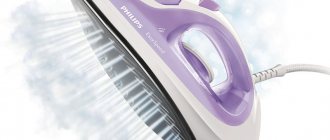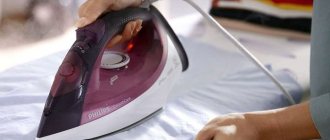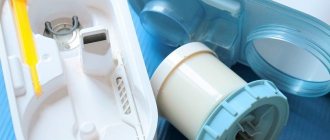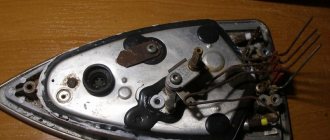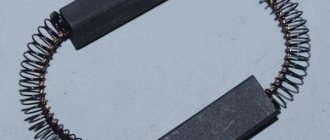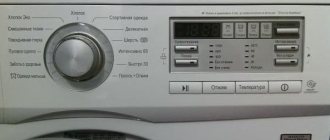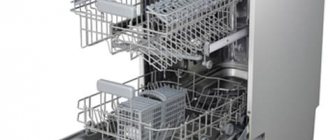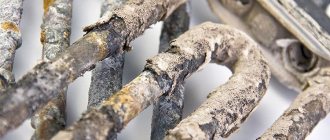Burning of fabric to the soleplate of the iron occurs quite often. Owners of even the latest modern models of irons are not immune to this problem. Most often, trouble occurs as a result of incorrect temperature adjustment. There are many ways to clean the device. The procedure can be carried out using folk recipes or ready-made store products. But to get the most effective results, you need to know the general rules for cleaning the soleplate of any type of iron.
General cleaning rules
When removing contamination, you should choose methods that are suitable for a specific iron model. However, there are general recommendations for performing the procedure.
Whatever material the sole is made of, you should remember that cleaning it with metal and sharp objects is strictly prohibited. For example, scissors or hard brushes. You cannot use sandpaper either. Otherwise, scratches will form on the surface of the sole, which will subsequently be impossible to get rid of.
If the procedure is carried out using a chemical agent, after completion it is necessary to wipe the device with a damp cloth. If you do not wipe off any remaining cleaning product in a timely manner, there is a risk of damaging your clothes during subsequent ironing.
It is better to clean the surface on the balcony or in a room with open windows. When using chemicals, you must wear a special mask.
If there are fragments of stuck fabric on the surface, you need to remove them with a cotton swab dipped in vinegar.
How to clean an iron from burnt soles at home: step-by-step instructions
The sequence for removing carbon deposits is as follows:
- Determine the degree of contamination (light, medium or heavy) and the surface material.
- Choose a suitable remedy from available products or store-bought substances.
- Cover the table (ironing board) where the processing will take place with paper or an unnecessary towel.
- Mix the ingredients and measure the required volume. If necessary, heat the iron.
- Apply the mixture to the burnt area.
- Remove excess with a wet cloth.
- Wipe the base with a dry cloth.
Don't forget about precautions:
- If water is used, turn off the iron,
- Use substances with a pungent odor when the window is open,
- Protect yourself from burns with gloves.
To avoid scorching from various sources (fabric, paint, etc.), it is recommended to cover the item with gauze when ironing.
Cleaning irons with Teflon and ceramic coatings
Teflon and ceramic coatings are made for modern iron models. The rules for cleaning such coatings are approximately the same. Irons with Teflon coating are good because they heat up to maximum temperature in a short time, and also glide smoothly over the surface of the fabric when ironing. However, such devices require regular maintenance. Otherwise, the device ceases to perform its functions efficiently.
The Teflon sole can be cleaned using chemicals or folk recipes. Most often used:
- Special pencils that help soften plaque.
- Store-bought cleaning products.
- Vinegar.
- Wax.
- Hydrogen peroxide.
Mandatory rule: wipe the surface with a rag or napkin at the end of the procedure.
Expert opinion
Sofia Kovalevskaya
Experienced housewife.
Ask me a question
Ceramic soles can be easily cleaned at home, but also require careful use and proper care. For ceramic surfaces, special glass ceramic cleaning products, sold in specialized stores, are suitable. The procedure is performed using a sponge suitable for non-stick bases.
For home cleaning, use:
- Lemon acid.
- Ammonia.
- Vinegar.
During procedures, it is recommended to carefully walk over the surface to prevent scratches.
Is it possible to get rid of melted synthetics?
Most often, this type of contamination appears as a result of ironing plastic elements on clothing. When thinking about how to clean synthetics, you should pay attention to special preparations that dissolve such substances and do not affect the coating of the iron.
From polyethylene
Nobody deliberately smoothes polyethylene. But sometimes molten particles of this material remain on the sole of the iron.
To prevent this problem, you should check each time at what temperature the device operates.
If there is already stuck synthetic material on the coating, you can use acetone. In addition, you can clean your iron from synthetic carbon deposits at home using nail polish remover.
You need to thoroughly saturate the bandage with the selected substance, and then treat the stains with it. After completing the procedure, the lower part of the iron should be moistened with water and wiped dry.
Pieces of synthetics can also be removed using ordinary laundry soap. To do this, you need to heat the device and rub the dirty areas, then leave the iron to cool. Then the product should be washed off with running water. Along with it, the remains of burnt synthetics will also be removed.
Cleaning irons with metal coating
Rules for cleaning metal coatings depend on the specific material. Metal bases are made of steel and aluminum. The steel surface is good because it has sufficient strength and good glide over the fabric. In addition, it is easy to clean. Common means to combat carbon deposits on steel soles:
- Soda.
- Toothpaste.
- Lemon acid.
The easiest option is to use laundry soap; this method was used back in the last century. However, soap can clog the special holes, making it difficult to release steam. You can also get rid of carbon deposits using a wooden spatula, however, you must ensure that scratches do not form on the coating.
Irons with aluminum soles are known as the most inexpensive devices. But the price usually corresponds to the quality, and careful and regular maintenance is required to keep such an iron performing well. Aluminum soles are unstable and brittle; they quickly become scratched and most often develop carbon deposits. To clean the aluminum surface, the use of hard brushes and sponges is not allowed. It is possible to remove stains using special pencils, soda or vinegar.
Important! It is forbidden to use citric acid on aluminum, otherwise the metal surface will likely be destroyed.
Types of coatings
When choosing a product to remove burnt fabric, you need to consider the coating material. The following types of iron soles are widely available:
- stainless steel;
- aluminum;
- ceramic;
- Teflon.
The first two types of soles are metal. To rid the surface of burnt surfaces, cleaning agents with hard particles - abrasives - are used. Do not use acids and acetone, as these substances can react with metal.
Ceramic and Teflon soles require delicate handling. After cleaning with abrasives, scratches remain on the iron, attracting small fibers of the fabric. As a result, the device sticks to clothes and linen even more strongly than before. You can wipe off carbon deposits using a special pencil or liquid solutions.
Popular ways to clean an iron from burnt fabric
Sticky fabric must be removed from the surface using a method depending on the coating of the iron. Today, on the shelves of hardware stores there are many products suitable for cleaning any surface. The most budget option is special pencils or crayons. Homemade products are equally common, such as vinegar, soda, citric acid or toothpaste.
Special pencils and tools
Cleaning sticks are considered a universal tool and are suitable for cleaning surfaces made of any materials, especially if there is stuck fabric. In addition, pencils are attractive due to their cost. The average price of a product is 50 rubles, but the amount may vary depending on the manufacturer’s brand. You can buy a pencil in hardware stores or online.
The good thing about the product is that it does not contain abrasives, which makes it unlikely that scratches and cracks will appear on the sole. Some pencils can not only remove elements of burnt fabric, but also remove scale from the surface. One of the disadvantages is the unpleasant odor of the product, which intensifies during the cleaning process. Therefore, it is recommended to open the windows during the procedure. To achieve the desired result, you need:
- Preheat the iron to its highest temperature.
- Slightly tilt the device and walk the pencil over the contaminated areas. The cleaning element will begin to melt and flow down. At this moment, you should take safety precautions, otherwise a burn may occur. You don't need to press hard on the pencil.
- Wait until the iron cools down; to do this, you can take it out onto the balcony.
- Remove any particles of product with a cloth or napkin.
- Before using the device, it is recommended to first walk on the cotton surface.
If the deposit has not completely disappeared, it is recommended to repeat the procedure again.
To clean ceramic soles, you can use special products for glass ceramics. For the procedure, you will need to warm up the iron, apply the product to the sole, wait a little, and wash off the residue with a rag or napkin.
Home methods
You can remove carbon deposits from the soleplate of an iron with many household products that are available in the arsenal of almost any housewife. The most common options are hydrogen peroxide, citric acid, soda, and salt.
To perform the procedure using peroxide, you need:
- Take a cotton pad and soak it generously in peroxide.
- Wipe the soleplate of the iron.
- Wipe off any residue with a damp cloth.
There is no need to heat the iron during the process.
Cleaning with citric acid gives an effective result that is no different from store-bought products. To complete the procedure, you should follow the instructions:
- Add a spoonful of citric acid to a glass of cold water.
- Stir the solution.
- Pour it into a special liquid reservoir.
- Activate the steam release function.
- Repeat the steps several times.
Next, let the iron cool and wipe the soleplate with a cloth.
To remove carbon deposits using baking soda you will need:
- Heat the device to the highest temperature.
- Wrap a few spoons of soda in a bandage or gauze.
- Go through problem areas.
When finished, let the iron cool and wipe the soleplate with a rag or napkin.
To carry out the procedure using salt, you will need:
- Spread a cotton cloth on a hard surface.
- Pour a glass of salt onto it.
- Heat the iron and walk over the cloth with salt.
- Continue until the salt turns brown.
Allow the iron to cool and wipe the cleaned area with a cloth.
How to prevent carbon deposits
The most effective way to keep your iron clean is to avoid unpleasant deposits. It is worth monitoring the heating temperature of the iron and not placing an overheated device on the fabric. The non-stick coating of the iron is also a good option to avoid fabric sticking.
You need to think about how to remove carbon deposits from the iron. Try to wipe the sole with a solution of citric acid after 3-4 ironings. This solution wipes off dust and removes plaque.
The main mistakes that cause soot to appear:
- Setting the wrong temperature settings. For silk fabrics, the maximum temperature is 110 degrees. For wool no more than 140 degrees, and for cotton 200 degrees.
- Not using wet gauze when ironing fleecy items. If you have to iron wool items, you should definitely use a wet cloth. This will help prevent wool fibers from sticking to the outer surface of the iron and the fabric will not be damaged.
- The habit of leaving the iron on after work or ironing. Be sure to turn off the iron after use, otherwise, from this habit, the iron will have an unpleasant coating and carbon deposits.
- Neglecting to care for the iron according to the instructions. Comply with the prescribed standards and operating periods.
The key to long-term and high-quality operation of the iron is proper care and operation. Therefore, you should not run the surface of the iron, otherwise the older the stain, the more difficult it will be to dissolve. Poor handling will lead to failure of any electrical appliance. Before you take the means at hand and rub away dirt, you need to read the rules for caring for the iron in the instructions.
Preventing the formation of burning marks
Problems with carbon deposits can be avoided if you follow some rules and regularly monitor the device. Even modern models of irons with non-stick coatings require careful care.
To eliminate problems you should:
- Carefully select the temperature for a specific fabric material.
- Perform the ironing process only on a stable and hard surface.
- Add clean water that has passed through a filter or boiled into the liquid reservoir.
- Don't forget to throw away any remaining water after ironing.
- After each ironing, wipe the soleplate of the iron with a napkin.
- Clean the device regularly.
- Try to iron synthetic fabrics through gauze.
- If fragments of tissue appear on the sole, remove them with a cotton swab dipped in hydrogen peroxide.
Important! If carbon deposits do form, it is better not to use the iron for ironing, but to clean it thoroughly. Otherwise, the contaminated sole will leave dirty marks on it when it comes into contact with the fabric.
Reasons for the formation of plaque on the iron
- Incorrect temperature selection.
- Contact of the iron with fasteners on clothing.
- The use of hard water in a steam generator contributes to the formation of plaque inside the liquid reservoir, which over time appears near the steam outlets.
If a problem exists, you need to decide how to clean the iron from burnt fabric. Before choosing a cleaning method, it is a good idea to familiarize yourself with the safety rules.
Removal depending on tissue
It will no longer be possible to revive damaged items with dark traces.
There are different ways to remove shine from an iron. The choice of elimination method is necessary depending on the fabric, fiber composition and thickness of the product. Of course, if clothes are severely damaged during ironing and a brown or black stain appears on them, it is impossible to return to their original appearance. Another wash will help remove shiny, slightly damaged stains from any fabric. If you don’t have enough time, you can take the product to a dry cleaner, where specialists will return the product to its original appearance. In the departments of hardware stores you can buy special products that can remove burns from iron; the method of using such drugs will be indicated in the instructions. In addition to such removal methods, there are also folk recipes that allow you to quickly get rid of stains and burn marks.
Natural
Baking soda helps remove tan lines and hairspray from delicate fabrics such as silk. Application:
- B 1 a. Dissolve 1 teaspoon of warm soda mixture and stir.
- Soak gauze in the resulting solution, wring it out and apply it to the shiny area.
- Steam with an iron until completely gone.
If your cashmere or wool clothing is damaged, iron stains can be removed with ammonia. Recipe of dish:
Water with ammonia will remove marks from natural fiber fabrics.
- Add 5 ml of ammonia solution to 0.5 liters of water.
- You can add a couple of drops of liquid powder or shower gel to the mixture to get rid of the unpleasant odor.
- Dampen a soft sponge with the solution and gently rub the tanned area until the stain disappears.
- Rinse the item and iron it over the surface of the item through gauze.
If you need to remove shiny spots on white linen, low-fat kefir will help. Application:
- Add the same amount of water to 1 liter of fermented milk product.
- Dip the damaged item into the solution and store until the defect disappears completely.
- Wash off the remaining kefir with soapy water.
Synthetic products
Denatured alcohol will help remove stains from synthetics. It should be used like this:
- Soak a cotton swab in the product and remove the moisture, squeeze out.
- Treat yellowing until completely removed.
- If the stain does not disappear, leave for 1 hour for better saturation.
- Wash the product with powder detergent.
Light fabrics
Hydrogen peroxide will help save light-colored clothes.
Regular hydrogen peroxide, which can be found in every home, will help remove yellow stains from white and light-colored laundry. The procedure is simple; you need to soak a cotton swab in the solution and carefully treat the tumor. Wait until the applied product dries and rinse the clothing in cold water. Laundry soap will help eliminate minor damage. Recipe of dish:
- Grate the soap on a coarse grater.
- Add hot water.
- Make sure the soap is completely dissolved.
- When the water is hot, soak the spoiled product in it.
- Leave on for 1 hour and then rinse off.
A solution based on boric acid, which makes fabric lighter, will help get rid of stains on a white shirt, and can also be used as a bleach. Application:
- Dissolve the substance powder in hot water at the rate of 1 tablespoon per liter of liquid.
- Immerse the product in the solution and leave for 10 minutes.
- Wash the product as usual.
Dark products
Acetic acid will go well with elements of a dark business suit.
When a stain forms on a black suit or on the surface of trousers or a jacket, the task becomes more complicated, since frequent washing of such items is contraindicated, but there is still a way out. You can use 6% vinegar. Mode of application:
- Dilute 1 tablespoon of acetic acid per 1 liter of water.
- Dip the iron in the solution and wring out the material well.
- Place the cloth over the shiny area.
- Activate the steam setting on the iron.
- Steam is passed until the shine disappears completely.
To remove yellowish stains, you can use the following recipe:
- Mix water and acetic acid in equal proportions.
- Soak the burned area with the solution and apply salt liberally.
- Wait until the applied mixture dries completely.
- Washing is ok.
A smooth mark on dark clothes will get rid of black tea infusion. Use it like this:
- Brew 4-5 tea leaves in 1 boiling water.
- Leave for 6 minutes, strain.
- Dip a cotton pad into unsweetened tea.
- Remove stains using circular movements.
- Iron with iron.
Salt
If you have it, take sea salt - it absorbs any dirt faster. And at the same time it is an excellent natural antiseptic - it will also serve as disinfection. Just take salt without dyes, flavors or additives. You will need:
A thick sheet of paper and a spoon of salt.
What to do:
Drain all the water from the iron, turn off the steam and heat it at maximum power. Spread a spoonful of coarse salt in an even layer on an old pillowcase or thick paper sheet. Iron it back and forth several times and the burn will go away on its own. The main thing is not to press too hard so as not to scratch the surface of the sole on the salt crystals.
Traditional recipes for cleaning the iron
The soles of many modern devices are quite fragile. However, such materials have their own tricks and tricks. “Wedge” will tell you how to safely and effectively clean iron-burnt fabric.”
There are different methods for cleaning soles made of ceramic, steel, Teflon, enamel, and aluminum.
Pencil for irons
A universal product that adapts to any surface. You can buy a pencil at a hardware or hardware store. Does not scratch, does not leave streaks, and effectively removes old carbon deposits. Disadvantage: unpleasant smell during cleaning.
Application procedure:
- Heat the iron to 140°C.
- Tilt the device below 45° and rub the pencil over the dirty areas.
- Wait until it cools completely, remove dirt with a dry cloth.
- Press the steam button to clean the holes.
Iron the cotton fabric to evaluate the finish. Recommended pencils: Snowter, Magic, Typhoon."
Paraffin candle for cleaning soles
How to clean burnt fabric from iron utensils at home:
- Wrap the candle in cotton cloth.
- Heat the device to medium temperature (two points).
- Tilt the iron 45-30° and wipe the surface of the plate with a candle.
- After cooling, wipe the housing with a damp cloth.
Be sure to check the result on unnecessary material (cotton, cotton fabric). A candle can be used as an analogue of a pencil, which is only suitable for fresh dirt.
Soap solution
If it is slightly burnt, wash the plate as usual. The rag is moistened in one of the following solutions:
- shampoo.
- dishwashing detergents;
- shower gel;
- liquid soap;
Then clean the device. To enhance the effect, apply pure liquid soap to the soleplate of the iron and leave for 30 minutes. Then rinse the product with water and wipe the surface with a dry cloth.
Acetone
The aggressive substance dissolves combustion particles, so cleaning the sole afterwards is easy. Use paint thinner or nail polish remover to clean the device. Dampen a cloth with liquid and remove stains. The iron is turned off. Finally, wipe away any remaining product with a damp cloth.
When using fluids containing acetone, make sure they do not come into contact with plastic surfaces. This may damage the device.
Table vinegar 9% for cleaning the iron
The product is suitable for both cleaning and preparing baths.
Application procedure:
- Pour vinegar into a saucepan or bowl to a depth of 1 cm.
- Heat the device to medium temperature, unplug it.
- Place the iron in a baking dish and leave for 7-8 hours (preferably overnight).
- Clean the sole with a sponge or cloth.
- Dry the surface.
An alternative is acetic acid. Dissolve 2 sachets in 200 ml of warm water (if the contamination is light, reduce the amount of water by half). Wet the towel and work on the lid. After cleaning, wipe well with a damp cloth and dry.
Ammonia
A universal and proven product for removing dirt and carbon deposits from the surface of the iron. To achieve the desired effect you will need:
- Prepare the solution: displace water and ammonia in a 1:1 ratio.
- Warm up the sole.
- Soak a rag or sponge in the solution.
- Iron firmly over dirty surfaces. The action is repeated until the sole is cleaned. Alternatively, you can thoroughly moisten it with the solution and leave it overnight. Therefore, clean the surface with a dry cloth.
The same algorithm is used to use ammonia in combination with 9% acetic acid in a 1:1 ratio.
Alternatively, mix a tablespoon of denatured alcohol with 5-6 drops of lemon juice, then apply the product to a cotton pad or cloth and thoroughly clean the soles.
Ammonia and lemon against soot
There is no need to use ammonia in combination with other cleaning ingredients. The substance effectively removes contaminants when used in its pure form. To do this, moisten a cotton swab with ammonia, then vigorously wipe the soleplate of the iron. There is no need to heat the device.
Salt
When thinking about how and with what to clean the iron from burnt fabric at home, do not forget about table salt, which is found in every home.
First way:
- Heat the device and wipe the contaminated area.
- Place two tablespoons of salt in a cotton bag;
Second way:
- Turn on the device, heat and iron on salt until the stains disappear.
- Pour a glass of salt onto a hard and flat surface (cardboard, cardboard);
Salt has wonderful properties and is simply irreplaceable at home (and not just for cooking). Let's discuss how else to clean the soleplate of the iron from burnt synthetics at home?
It is important to know how to clean an iron from a burn on the sole at home - more on this in another article.
Baby cream
Baby cream is great for cleaning the iron at home from sticking fabrics and removing scale from the ironing surface of the device. Can be used for irons with various coatings, including Teflon.
- First you need to warm up the iron thoroughly and unplug it before starting the procedure.
- It is best to use a cotton swab for cleaning. You need to squeeze a small amount of baby cream onto it. After the device has cooled down a little, we begin to carefully remove the carbon deposits.
- Cotton swabs are great for cleaning steam vents.
- Upon completion of cleaning, the surface should be washed with clean water and dried thoroughly.
Visit Council Land's homepage for more great stories.
Lemon acid
This product is great for removing small stains. Citric acid is also used to prevent plaque and burns from stuck tissue.
The cleaning solution is prepared from citric acid and water.
- You will need 1 sachet of acid and 1 liter of cold water.
- After mixing, pour the solution into the bottle. You can use it every time after ironing.
- There is no need to heat the device.
- You will need a soft cloth for cleaning.
- It is moistened in the solution and the sole of the iron is cleaned.
The plaque should remain on the fabric. Regular use of this product will help prevent infection. The home assistant will always be in order.
Soda
Baking soda will help clean a burnt iron - take a simple recipe:
- Then carefully remove the dried layer with a sponge and wipe with a dry towel.
- Mix baking soda with water to make a porridge;
- Apply to contaminated areas and leave for 5-10 minutes;
- Warm up the device;
Be careful not to press down on the soleplate, as baking soda is abrasive and may leave small scratches. We will tell you which Philips iron is best to buy for your home in another related article.
Chalk
This method cleans the Teflon soleplate of the iron well.
- You need to take a small piece of chalk and knead it. You should get a homogeneous powder without lumps.
- Heat the iron to medium temperature and unplug it.
- Sprinkle some powder on the burn.
- Wipe problem areas with a soft cloth.
Dirt from the countertop will be removed along with the plaster.
Then thoroughly wipe the bottom of the appliance with a dry paper towel. There should be no residues of gypsum or carbon deposits on the surface. Then wipe it again with just a damp cloth. Wait for it to dry.
Shaving foam
If the device is slightly dirty, you can use shaving cream.
- The appliance must be cold.
- Apply the foam to the countertop and wait about 20 minutes.
- Remove foam and dirt with a sponge.
- Wash the plate and dry thoroughly.
Try this method if you don't know how to clean your iron at home from sticky fabric and resulting dirt.
Dentifrice
No one has brushed their teeth for a long time, but it is still found in almost every home. The fact is that tooth powder is useful in everyday life. Dip a cotton pad soaked in the powder and apply it to the burnt fabric. All traces of the burn will disappear before your eyes. This method is contraindicated for ceramics and Teflon and will only save the good old metal sole.
As you can see, you don’t need to think long about the question of how to clean carbon from iron. Smart and experienced housewives have long understood folk wisdom and prepared a whole list of practical advice for us. All that is required of us is to follow the basic rules of ironing. You need to choose the right temperature. Use gauze for ironing wool or synthetics and don’t be lazy to clean the soleplate of your iron after every two uses. If everything is done on time, the iron will last for decades.
Hydrogen peroxide 3% for iron soleplate
Ammonia can be used instead of peroxide.
Application procedure:
- Dip a towel (preferably one per waffle) into the solution.
- Lay it out on the board and iron it with a cold iron.
- Heat the device to the minimum temperature and unplug it.
- Remove any remaining dirt with a damp cloth (with hydrogen peroxide).
When working with ammonia, wear a mask or open windows and provide fresh air.
Advice from "Clean". Never use alcohol or hydrogen peroxide on a hot sole.
Why does fabric stick to the iron?
Failure to comply with them will result in premature wear and damage to property. One of the most common problems is fabric sticking to an iron bed. The main difficulty is that the iron is no longer used. It is not easy to remove pieces of fabric attached to the iron yourself. Knowing the reasons will help prevent the problem.
Often during operation, various contaminants appear on the sole of an electrical appliance: carbon deposits or deposits.
Causes:
- damage to the platform: scratches, microcracks reduce the quality of ironing;
- excessive temperature conditions - microfibers remain on the sole of the iron, the accumulation of which leads to the formation of carbon deposits;
- the use of low-quality water - limestone in the water leads to the formation of roughness on the surface of cast iron, a decrease in the quality of the flow, and the formation of soot;
- failure to follow the rules for ironing delicate fabrics.
- the presence of metal, cellophane, plastic, leather fabrics on things;
- violation of the rules for cleaning the surface of the iron - for these purposes it is not recommended to use knives, metal brushes, or powders for treating kitchen surfaces;
- sensor malfunction, incorrect heating display - ironing delicate fabrics at maximum temperature leads to burns;
- overexposure of iron to things - this often happens when attention is distracted;
Most often, burns occur due to non-compliance with the recommended temperature conditions and lead to difficulties during ironing.
In most cases, fabric sticks to the iron when ironing at the wrong temperature. When ironing delicate fabrics, it is recommended to use damp gauze.
Causes of burning
The cause of burns is the adhesion of microscopic fabric fibers to the soleplate of the iron.
Fiber adhesion occurs when:
- Inappropriate temperature setting selected. Follow the recommended temperature conditions for each individual fabric. Silk clothes must be ironed at minimum temperatures, and for wool, direct contact with the soleplate of the iron is generally not recommended (only through gauze or a piece of cotton fabric).
- There is contact between plastic buttons and hot soles. Avoid touching them so that dirty marks do not appear on the fabric and sole.
- Mechanical damage occurs to both the iron itself and its platform. Falls and impacts may cause damage or scratches that may not be visible to the naked eye. But dirt, particles of fabric and dust will inevitably accumulate in them.
- Ironing clothes with metal inserts occurs without due attention. When ironing, such parts can scratch the coating, which will lead to deformation and the formation of burnt marks.
- Hard water is used for the steam generator. Carbon deposits are inevitable if tap water is poured into the compartment instead of a specialized solution.
From everything written above, it is worth concluding that the main reason for the formation of soot is carelessness on the part of humans. Even an iron with a non-stick coating will quickly become covered with layers of burnt marks if you use it without following the operating instructions.
It is worth remembering that the best remedy for burning and soot is the timely removal of primary contaminants.
How to clean different types of coating
Before choosing an iron cleaner, you should know the platform material. This will avoid problems and select the most effective cleaning method.
Teflon
Irons with a Teflon platform are functional. They are suitable for ironing all types of fabrics. Teflon platforms have a non-stick coating. Fabric rarely sticks to them, but it still happens. To begin, it is recommended to wipe the surface with a cloth dampened with water. Under the influence of temperature, the dirt should disappear. When cleaning such surfaces, it is also recommended to use special sponges or pencils. When performing the procedure, it is recommended to follow the manufacturer's instructions. A sufficient part of the kit includes special scrapers designed for cleaning the surface. If necessary, you can purchase a wooden scraper from the store and use it for the same purpose.
The main disadvantage of the Teflon coating on an iron plate is its high susceptibility to scratches.
An excellent alternative is to use vinegar essence. Working with aggressive liquids requires taking precautions. Contact with mucous membranes, skin, risk of burns. It is advisable to dip a small piece of cloth into the essence and clean the platform with it. If there is no effect, a piece of fabric soaked in the solution should be ironed.
A Teflon-coated iron speeds up the ironing process and is gentle on the fabric.
Aluminum
Aluminum is considered the most affordable material. In everyday life, the operation of such an iron is associated with big problems. The platform is subject to mechanical damage, soot and dirt become clogged inside. Modern models use improved types of aluminum, including anodized aluminum and aluminum with Teflon. The surfaces have non-stick properties, but they are also not resistant to damage and abrasion.
Irons with an aluminum platform are still produced today.
The use of substances containing abrasive particles in this case is not allowed. When cleaning, it is recommended to use a pencil, vinegar, mild toothpaste, and dishwashing detergent. At the final stage, it is recommended to polish the surface.
Ceramic
Ceramic surfaces are subject to mechanical damage. The use of abrasives in this case is strictly contraindicated; this will help prevent the formation of scratches that will stick to the fibers during ironing. Cleaning products for glass ceramics and microwave ovens will help remove traces of fabric from such surfaces.
A ceramic iron will make housework easier, significantly reduce ironing time, and also simplify this difficult process.
A special cleaning stick containing ammonia also shows high efficiency. Following the instructions will help you remove stains quickly and easily.
Other cleaning methods:
- Clean the platform with a cloth dampened with acetone.
- wipe the heated surface of the iron with a cloth moistened with hydrogen peroxide; at the final stage, the steam holes are cleaned;
- Rub the platform with toilet soap, leave for an hour, wipe off marks with a damp towel;
- moisten the cloth in a mixed solution in equal proportions of ammonia and water, treat the surface with it, repeat the procedure until the dirt is completely removed, the sponge should be soft, non-metallic;
Carbon deposits can be removed from synthetic fabrics using acetone.
Steel
Stainless steel is characterized by increased resistance to mechanical stress. When cleaning such an area, it is recommended to use baking soda and toothpaste. The matchbox method also demonstrates effectiveness. It must be collected and rubbed with a strip of sulfur on the surface.
The most comfortable sole made of steel with titanium coating.
Method 4. Vinegar
Vinegar is a universal soldier for our housewives. Yes, acid helps to overcome dirt and carbon deposits, therefore, this method can be safely recommended.
The only “but”... If your iron is of suspicious manufacture and is very cheap, then first test the vinegar on a tiny piece of the soleplate.
Be sure to do this so that you don’t cry later and curse the damn Chinese when the coating swells and starts peeling off before your eyes.
This is not a joke, but a true story, dear readers. For example, cheap Chinese-made faucets simply “shed their skin” if any strong acid or bleach comes into contact with them.
How to clean an iron with vinegar:
1. Use vinegar diluted with water, approximately 50 to 50.
2. Wet the cotton wool with the solution and wipe the sole thoroughly. If the spots are small, they go away very easily and quickly, almost immediately.
3. If we are talking about burnt fabric, then wet some thick fabric with vinegar solution and place the iron on it. Let it stand like this for at least the whole night, and by morning the fabric will come off and the carbon deposits will dissolve.
4. At the end of any of these procedures, wipe the surface with a damp cloth with clean water (to remove the smell of vinegar), and then dry it completely.
Methods for coatings made of steel, titanium, enamel
Steel, titanium and enamel coatings are the most durable; they are not afraid of abrasives. All cleaning methods for ceramic and Teflon surfaces are also suitable for them. But there are also additional means.
Toothpaste
Regular toothpaste can remove burnt marks from an iron. You will also need an old toothbrush and cotton swabs.
Here's how to proceed:
- Apply the paste to areas with soot with a toothbrush.
- Connect the iron to the mains and heat to minimum temperature.
- Take a clean, damp sponge or rag and remove the paste. Turn off the device before doing this to avoid getting burned.
- Next, use cotton swabs to clean off any remaining paste if it gets into the steam outlet holes. You need to act quickly so that the mass does not have time to dry out.
- Wipe the sole with a clean cloth and iron the unnecessary cotton cloth at maximum temperature to make sure that no traces of paste remain.
Soda
Soda is a soft, gentle abrasive that will perfectly clean electrical appliances from burnt fabric. The following methods are quite effective:
- 2 tbsp. l. dilute soda with a small amount of water. Apply the resulting slurry to a cotton pad and wipe off the carbon deposits. There is no need to be afraid to press lightly on the sole; there will be no scratches.
- Combine 1 tsp. liquid dishwashing detergent, 1 tsp. soda and 1 tsp. water. Foam the total mass, spread over the sole and leave for 10-15 minutes. Then clean the surface with a hard sponge and rinse with water.
- 2-3 tbsp. l. soda powder diluted with a small amount of 3% peroxide. Apply this paste to the stains and remove with a clean cloth after 5-7 minutes.
After the procedure, wipe the iron dry.
